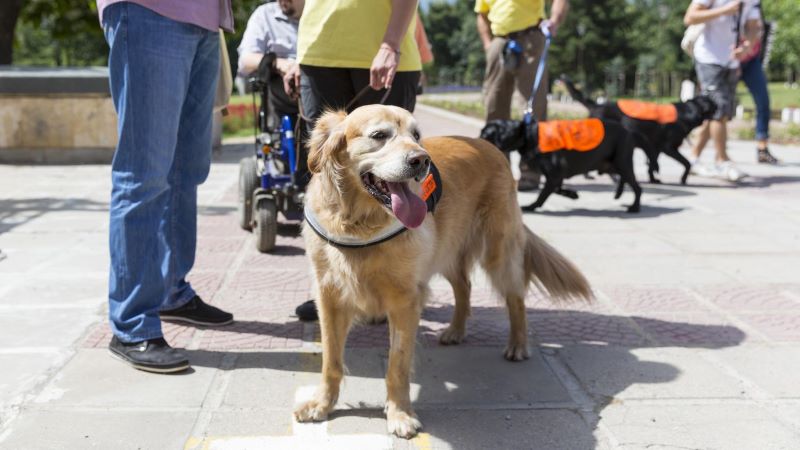I recently completed a Spartan Race in Asheville, NC, and was pleased to see a fellow spartan, service dog in tow. The dog was wearing a vest, so I knew he was a service animal, even though I could not see any obvious disability present in the man. But just because his challenge wasn’t obvious, doesn’t mean there wasn’t something that the dog was fiercely protective over. My fellow competitor may suffer PTSD, a seizure disorder, or a mental illness, and his service dog was the reason he was able to participate in one of the most difficult obstacle races out there.
International Assistance Dog Week is celebrated August 6-12 this year. In order to understand what this week is all about, I’ve broken down the characteristics of assistance dogs below.
What is an assistance dog?
An assistance dog is a dog trained to assist a person with a disability (Webster’s Dictionary).
Who might an assistance dog help?
The Americans with Disabilities Act, or ADA, is careful to state that service animals are working dogs, not pets. These dogs are individually trained to do work or perform tasks for people with disabilities. They can help people with any number of challenges.
Guide dogs can:
- guide people who are blind
- alert people who are deaf
- accompany those in a wheelchair
- protect people with seizure disorders
- remind people with a mental illness to take prescribed meds
- calm individuals suffering from PTSD during an anxiety attack
What breed of dog is best for the job?
Any dog can be trained to be of service to a human, but there are certain breeds who ave been found to respond better to this type of training. According to PetMD’s blog post, Service Dogs: How to Make Your Dog a Service Dog and More, the best service dogs are Golden and Labrador Retrievers, Samoyed, and Smooth Coated and Rough Coated Collies. The ADA does not require that service animals be professionally trained, but the organization does require service animals to be harnessed, leashed, or tethered. If being leashed hinders the work of the service dog, the dog must be able to be controlled through voice commands.
How can I honor the assistance dogs of the world?
The best way to honor an assistance dog is to recognize his work as the selfless act that it is. These dogs are fiercely loyal, always faithful, devoted companions to their humans, and would literally do anything for them. In a recent post, International Guide Dog Day, I shared some dos and don’ts for interacting with guide dogs.
DO address the owner of a guide dog first, and the dog second after receiving permission from the owner to do so.
DON’T distract the guide dog from his work. Even though guide dogs are trained to ignore distractions (even cats!), it is still best to let the dog focus.
DO keep your dog on a leash when near a service dog. When a guide dog is wearing his harness, his first order of business is his work, and he is not allowed to interact or play with other dogs. It’s best to just walk on by.
DON’T pet a guide dog or offer him treats, unless you’ve received permission from his owner first. Diverting a guide dog’s attention away from his work creates the same danger as distracting the driver of a car.
DO trust the guide dog to make decisions that are best for his owner.
Assistance dogs are heros!
Guide dogs have opened the door for many people with disabilities to participate in life in ways they could not before. Without his sidekick, my Spartan comrade may have had to watch from the sidelines. With his guide dog’s unwavering protection, a challenging obstacle course became possible for his owner. I am thankful that together, a Spartan and his pup can cross the 20 foot wide, 2 foot tall fire jump at the end of the course and claim, “They are Spartans.”

